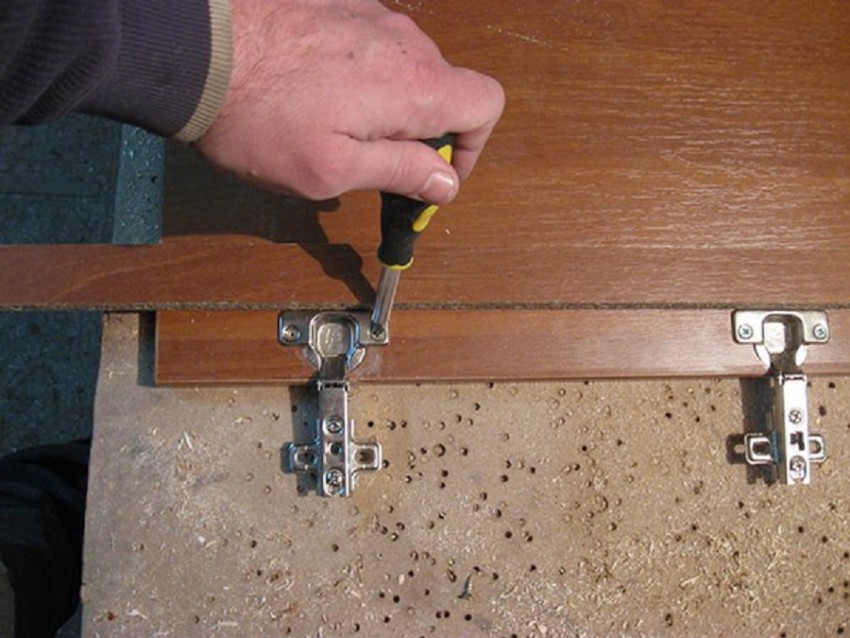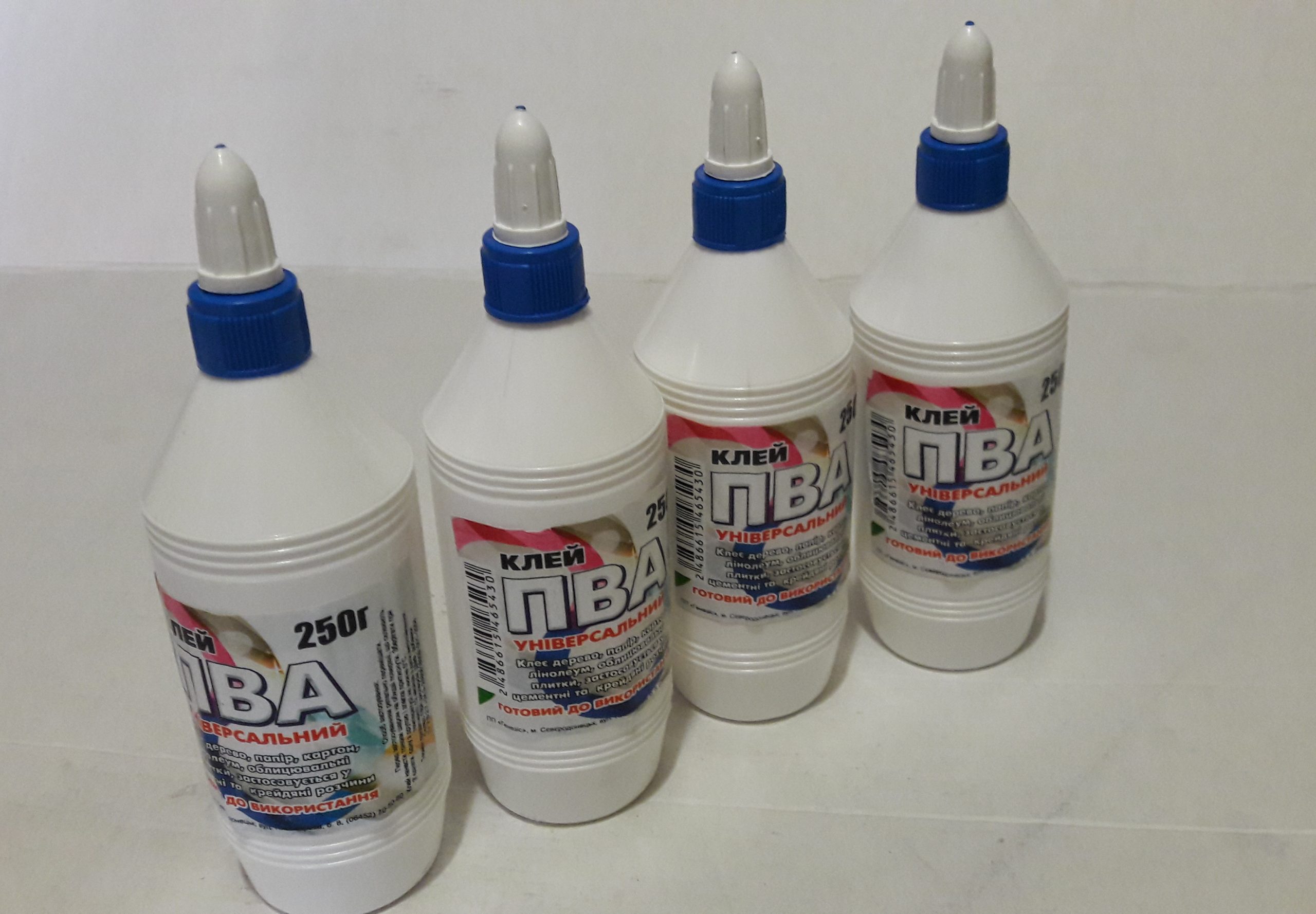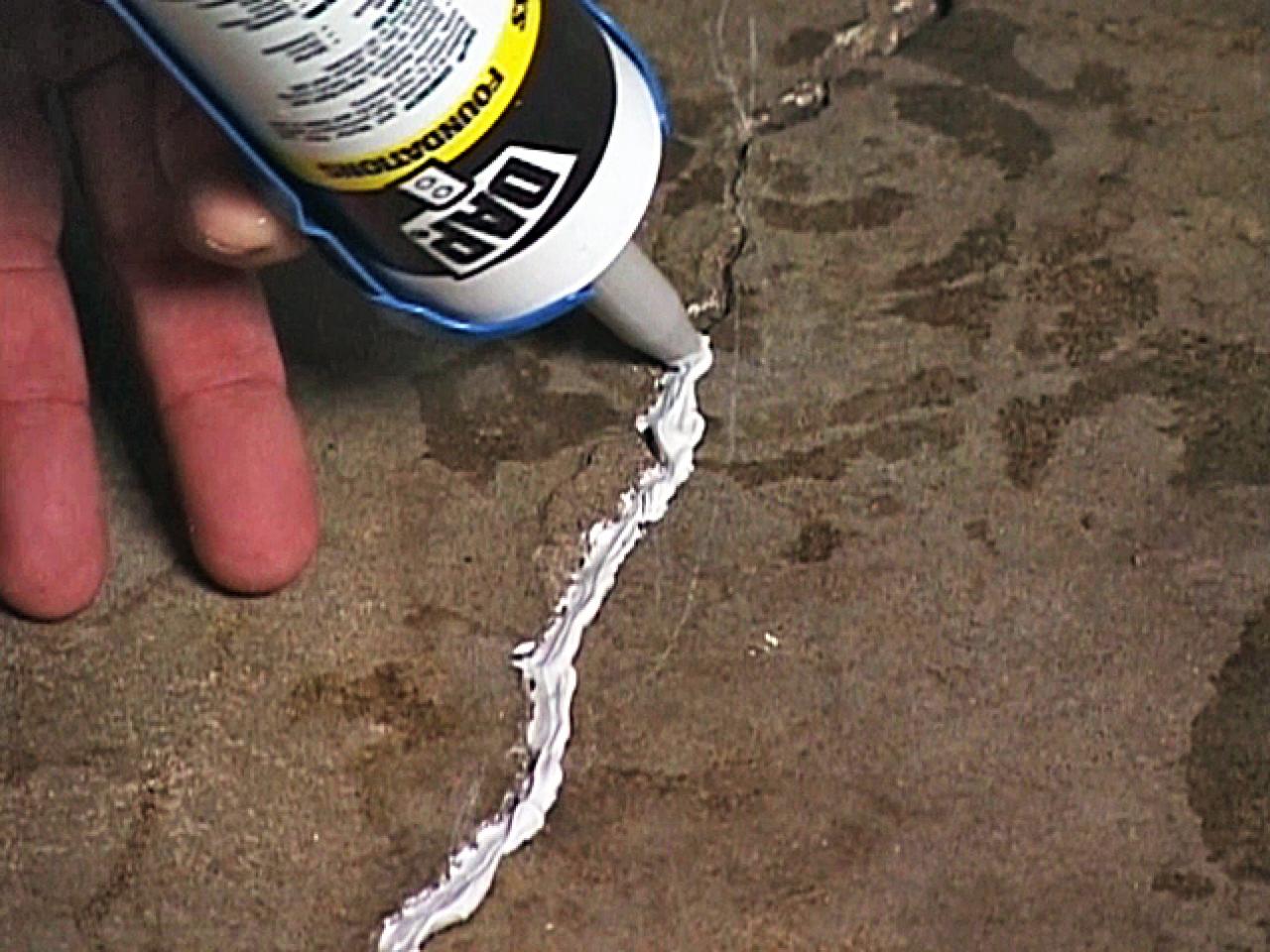How to repair chipboard furniture with your own hands
Laminated chipboard is a fairly popular material for the manufacture of furniture at an affordable price range. He, like all materials, is susceptible to defects during transportation and operation, and not all of them lend themselves to successful restoration. However, some of the damage can be successfully masked or completely removed by yourself.
Types and causes of damage to chipboard furniture
The main damage that occurs during the use of chipboard furniture includes the following:
- scratches, chips, flaking of the edge - can be caused by a factory defect, careless transportation or careless operation;
- loosening - appears due to a factory defect, careless operation, or with frequent disassembly;
- creaking or torn hinges, falling off facades - occur due to improper installation, frequent opening and closing of the door, its too large weight, or insufficiently strong fixation of the fasteners.

What you need to restore furniture
The following materials may be useful for the restoration process:
- Wax putty, or soft furniture wax. It is used to hide scratches, chips and cracks on the surfaces of interior doors, cabinet furniture, parquet and laminate. Makes the treated surface moisture resistant.
- Hot-melt putty or hard furniture wax. Before use, it must be melted, for which you can use a soldering iron, lighter or gas torch. It is used in the same way with soft wax, but it is mainly used for restorations
surfaces that are particularly heavily used (for example, shelves, countertops or floor coverings). - Retouching tools. This includes markers or felt-tip pens with an alcohol base, fibrous and valve. They are used to paint on the texture of the material in the places of restoration, making the waxing less noticeable.
- Fixing varnishes and polishes in the form of aerosols and sprays. The surface is processed with them after the end of the restoration. The products allow you to hide minor scratches and scuffs, as well as give the furniture a shine.
- Melamine glue edge. Useful for replacing the ends.
- PVA, epoxy, wooden plugs and chopiks (dowels). With their help, you can fill in the holes formed in the place of the torn hinges.

You can use regular markers, paints, iodine, or shoe polish. The main thing is that they match the shade of the furniture.

You will also need the following tools:
- plastic spatula;
- sandpaper;
- iron or hair dryer (preferably industrial);
- stationery knife;
- chisel;
- fine sanding sponge;
- non-woven wipes;
- rags (felt fabric).

Repair of chipboard furniture at home
Restoration of chips and scratches
Chips often appear on the surface of the countertop and its ends, especially at radii and corners. They look like small light depressions.
The process for removing them is as follows:
- Preparatory processing. Before patching up a chip on chipboard furniture, it must be cleaned of dirt and processed with a chisel so as to obtain straight edges.
- Completion. To do this, you need to select a suitable shade of hard wax. This often requires mixing several crayons. It melts with a lighter or a special wax melter and is applied to the chip with a rubber spatula, after which it is rammed. In this case, you need to leave a small margin.
- Leveling the surface. When the wax dries, its excess fragments are cut off with a chisel, rubber spatula, or clerical knife. This must be done carefully, trying to form a clear right angle flush with the surface. After that, you need to make a light sanding using a rag.
- Restoration of texture. For this, a marker or felt-tip pen is used, with which lines are applied to the restored areas in accordance with the texture.
- Opening with varnish-spray. This will help to fix the restored area, as well as give the surface its former characteristic shine.

For a more natural look, each line must be wiped down with a paper towel after drawing, which will result in slight smudging and blurring of borders.
Chips can be easily removed at the ends covered with melamine edging. To do this, you need to purchase a new material (better than PVC) of the required shade and length. The work process is as follows:
- Remove the old edge. This can be done with an industrial hair dryer or iron.
- Clean the surface from chips. Sandpaper is used.
- Stick on a new edge. It also needs to be warmed up.
- Cut off the remnants of the edge. A clerical knife will do.
- Sand the renewed surface with a fine-grained abrasive sponge or paper.

After replacing the edge on chipboard, adhesive traces often remain. To mask them, tinting is used.

For scratches, such as on the legs of a bed, it is best to use a mild wax. The sequence of actions is as follows:
- Apply wax to the scratch with a spatula. This should be done transversely, thickening the wax and leveling at the same time.
- Finish the texture using a fine touch-up pen.
- Apply fixing varnish.

In the absence of wax, scratches can be repaired with a furniture finish in the appropriate color.
Restoration of holes for fasteners
Chipboard is a fairly durable material, but only with the preservation of integrity. With improper use, heavy loads, frequent opening or disassembly of furniture, various fittings fall out of the attachment points. At the same time, it will not be possible to simply tighten the fasteners, since the hole has become larger. Therefore, you can either move the mount to a new location, or restore the old site.
This requires:
- Extend the existing hole with a drill with a diameter of 8 mm.
- Pour wood glue or simple PVA into the hole.
- Drive coke or a wooden wedge into the hole and cut off the excess.
- Drill a hole in the coke with a smaller diameter than the self-tapping screw.
- Install the fasteners in their original place.

How to repair a torn furniture hinge
The furniture hinge on the facade can be torn out of the planting site along with part of the chipboard.In this case, a complete replacement of the door is ideal. However, it is not always possible to choose a material of the same shade as the main structure, and therefore it is worth trying to repair the canvas.
There are two options:
- Move the hinges below or above the original installation location. This is an easier method, but it will require patching up the old holes. A plastic plug is suitable for this. If the hole is large, then it must be filled with a mixture of PVA and small sawdust. After final drying, the place is masked with wax and polished.
- Repair the original seats.

A more complex option, however, avoiding new holes, which will extend the life of the facade. The works are as follows:
- clear the landing site;
- pour a mixture of epoxy resin and sawdust into the recess;
- smooth the surface with a plastic or rubber spatula;
- wait until it dries and, if necessary, pour more mixtures;
- after drying, sand the area;
- mark the area and drill a groove for the fastening of the required depth.
To extend the service life of hinges and fronts, it is necessary to smoothly open the doors and not hang heavy objects on the handles, as this leads to distortion.

Sealing cracks
Cracks on chipboard furniture appear due to exposure to heat or moisture, or due to careless use.
For repairs you will need:
- PVA glue;
- adjustable clamps;
- syringe with a needle.

The work process is as follows:
- Draw glue into the syringe. It is better to do this without a needle, which must be put on after completing the set.
- Fill the inner space of the crack with glue from a syringe.
- On the sides of the area with the crack, put the retainer on the surface and pull it off.
- Remove excess glue with a napkin. Leave the structure for a day. During this time, the glue will completely dry out.

Restoration of a worn surface
Surfaces that have been discolored due to abrasion, but are not severely defective, can be repaired using a suitable shade of colorant. Usually felt-tip pens play its role. They moisten the rags, with which the paint is rubbed in with soft circular movements. The process should be continued until the surface acquires a uniform color. The tinting is fixed with varnish.
In some cases, it is enough just to treat the surface with a pigmented polishing mastic or a special polish. Once the products have been applied to the countertop, polish it with lint-free wipes.
Features of facade repair
Particleboard facades are difficult to restore, since all of the above methods become visible when light falls on the surface.
Therefore, the front parts are not corrected, but completely updated in the following ways:
- Pasting with foil or wallpaper or covering with fabric or artificial leather. In this case, it is necessary to remove the facades and twist the handles.
- The use of hand painting, photo printing or decoupage. The image can be applied both to the entire surface, and only to the place of damage.
- Bonding of melamine tape to match or in a contrasting shade. This is done in even stripes.

Before any decoration, the surface must be degreased and cleaned.
Furniture decoration
After the furniture has been restored, it can be decorated. Typically, the following options apply:
- Drawings. They can be done manually or using a stencil.Acrylic paints are commonly used. It is better to place the ornament around the perimeter, and large drawings in the lower or central part.
- Decoupage. The most popular are plant or thematic drawings.
- Applications made of fabric, wallpaper or self-adhesive foil. They can be applied evenly over the entire surface or make up a specific composition. For this method, it is necessary to choose a waterproof fabric so that it does not lose its aesthetics.
- Thread. It is carried out using a sharp chisel and sandpaper. Should be done with care, as the slab is fragile if the integrity is violated.

Cleaning and repair of mechanisms
Moving parts are most susceptible to breakdown, whose parts eventually deteriorate and require replacement. You can repair or replace items such as rollers, springs, nets, rivets and lamellas on your own.
Each of their mechanisms requires an individual approach to diagnostics and repair, but the general order of work is as follows:
- Dismantle the mechanism.
- Disassemble it into its component parts.
- Install the damaged item.
- Replace as required.
- Reassemble the mechanism and put it in place.
Regular lubrication of moving parts can help prevent or delay minor breakdowns. The grease reduces the friction of metal elements and also protects against rust.
When to contact a specialist
It is worth contacting a specialist in the event of a serious breakdown, for example, a broken furniture, and a lack of special skills and knowledge. Also, do not engage in self-repair of expensive or memorable furniture, as there is a risk of causing irreparable damage to it.
If you need not just minor repairs or minor elimination of defects, but a serious complex restoration, then it should definitely be entrusted to the appropriate specialist or cabinetmaker.
Before you repair chipboard furniture with your own hands, you need to evaluate your strengths and choose the right materials. In the case of careful work, you can achieve a qualitative update in the appearance of products.
Video: how to fix torn hinges on furniture, including from chipboard





